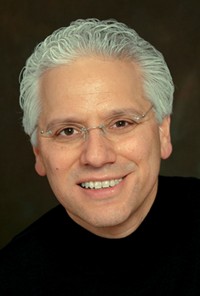Advertisement
Grab your lab coat. Let's get started
Welcome!
Welcome!
Create an account below to get 6 C&EN articles per month, receive newsletters and more - all free.
It seems this is your first time logging in online. Please enter the following information to continue.
As an ACS member you automatically get access to this site. All we need is few more details to create your reading experience.
Not you? Sign in with a different account.
Not you? Sign in with a different account.
ERROR 1
ERROR 1
ERROR 2
ERROR 2
ERROR 2
ERROR 2
ERROR 2
Password and Confirm password must match.
If you have an ACS member number, please enter it here so we can link this account to your membership. (optional)
ERROR 2
ACS values your privacy. By submitting your information, you are gaining access to C&EN and subscribing to our weekly newsletter. We use the information you provide to make your reading experience better, and we will never sell your data to third party members.
Biological Chemistry
Earle B. Barnes Award for Leadership in Chemical Research Management
January 30, 2006
| A version of this story appeared in
Volume 84, Issue 5

Sponsored by Dow Chemical
At a time when many people believed that nature had optimized physiological performance, Richard D. DiMarchi, 53, and his research team at Lilly Research Laboratories proved something antithetical: They demonstrated that proteins, although natural products, could be improved for use as medicine.
"When done with appropriate caution, you can build proteins that are safer, more efficacious, and more convenient," according to DiMarchi.
The award winner is currently a professor and Gill Distinguished Chair in Biomolecular Science at Indiana University, Bloomington, and chairman of Ambrx Inc. His research experience with Lilly, however, goes back to the early 1980s, when, he says, "the common belief was that native sequence could not be improved upon and that it was clinically dangerous to consider even subtle structural modifications. This thinking was deeply rooted in the success of biotechnology's ability to provide human proteins and in the expectation that Mother Nature knew best."
David E. Clemmer, chairman of the chemistry department at Indiana University, says, "The majority of DiMarchi's scientific contributions reside in a period when recombinant-DNA-directed biosynthesis of proteins emerged as a tool for the examination of the relationship of structure to function." The series of drugs that were discovered and developed under DiMarchi's leadership "represent some of the more significant developments in the emergence of the field of protein medicinal chemistry," Clemmer adds.
"The most visible scientific contributions from DiMarchi's laboratory pertain to endocrinology and, specifically, insulin," according to August M. Watanabe, who is a retired executive vice president and director of Eli Lilly & Co.
Scientific work from DiMarchi's group was central to the discovery and commercial development of Humulin and Humalog, both insulins; Humatrope, a growth stimulant; rGlucagon, for hypoglycemia; Xigris, for the treatment of bacterial sepsis; and Forteo, for the treatment of osteoporosis. DiMarchi also directed Lilly's pursuit of breakthrough delivery systems that offer the possibility of protein therapy without injection.
A decade of proven commercial use of the products of DiMarchi's research has enabled him and Scripps Research Institute's Peter Schultz to cofound Ambrx. The firm represents cutting-edge protein medicinal chemistry achieved through biosynthesis of proteins with nonnatural amino acids to further enhance pharmaceutical performance.
DiMarchi received a B.S. in chemistry with honors from Florida Atlantic University in 1974 and a Ph.D. in biochemistry from Indiana University in 1978. He completed a postdoctoral fellowship in the laboratory of Bruce Merrifield at Rockefeller University in 1981. DiMarchi was with Lilly Research Labs from 1981 through 2003, climbing the career ladder from senior scientist through group vice president of biotechnology and product development. His responsibilities included managing as many as 2,000 scientists and $500 million of yearly investment.
DiMarchi has given numerous plenary lectures both in the U.S. and overseas, including the Karolinska Research Lecture at the Nobel Forum in Stockholm in 1996. He was one of four recipients of the 1998 ACS Award for Team Innovation for the discovery of Humalog and the 2005 Research Achievement Award in Biotechnology given by the American Association of Pharmaceutical Scientists. His name is on 55 patents and more than 95 research papers.
"It is difficult to identify a single scientist that has served so broadly across the pharmaceutical value chain," Clemmer says, "from discovery through development and even manufacturing."
Another colleague says, "Not only does Richard possess deep scientific vision and expertise, but he is also an exceptional leader. Not only does he understand science, but he also understands the importance of process and people as the central ingredients in achieving results."
The award address will be presented before the Division of Medicinal Chemistry.-ARLENE GOLDBERG-GIST





Join the conversation
Contact the reporter
Submit a Letter to the Editor for publication
Engage with us on Twitter